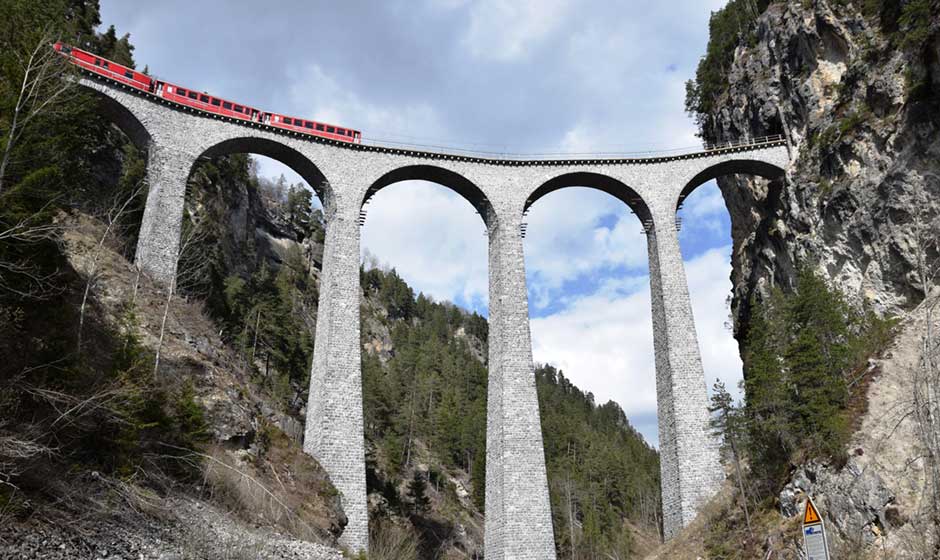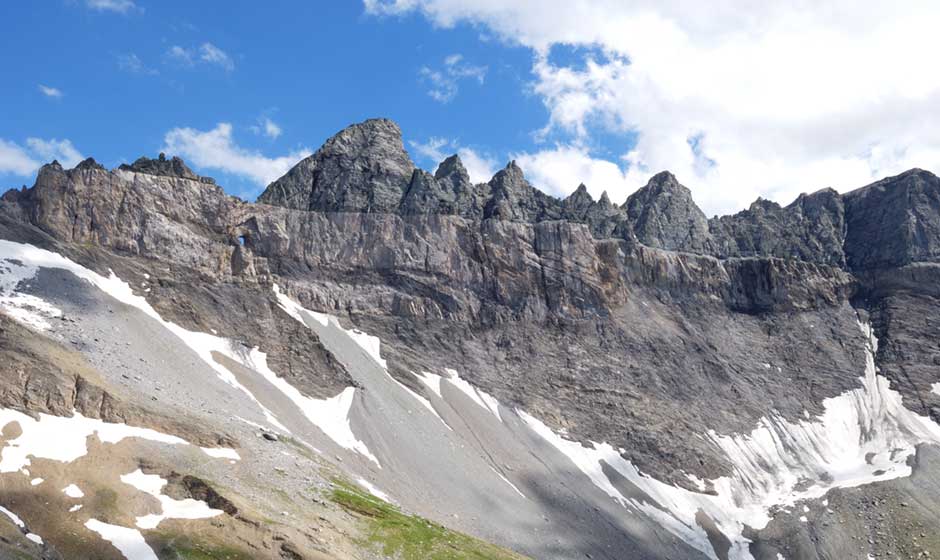UNESCO sites
Switzerland is fortunate to have many UNESCO World Heritage sites. We’ll explore culturally significant destinations in the eastern and central part of the country in this story and destinations in the western and southern areas in an upcoming story.
-
A. Müstair
Begin in Müstair where you’ll find the Benedictine Convent of St. John. The abbey was built during the reign of Charlemagne and is one of the few existing buildings from the Carolingian period. Switzerland’s greatest series of figurative murals, painted in A.D. 800, are housed here along with magnificent Romanesque frescoes. You’ll also find the region’s oldest castle tower, which is now accessible to the public.
-
-
C. Landwasser Viaduct
Leaving the valley, you will find the Rhaetian Railway in the Albula/Bernina Landscape. The train trip takes one of the world’s most spectacular routes. Two historic lines are brought together. The Albula line opened in 1904 and has 42 tunnels and covered galleries and 144 viaducts and bridges. The Bernina line features 13 tunnels and galleries and 52 viaducts and bridges. You will rave about the boldly curved Landwasser Viaduct, a single track six-arched curved limestone bridge. -
D. Tectonic Arena Sardona
The Tectonic Arena Sardona (Glarus Overthrust) is a 300 sq. km area around the Piz Sardona, which is a two hour’s drive from the viaduct. The geological phenomenon of overlay — older rock strata found above younger rock — bears witness to continental collision and tectonic thrust. Seven peaks rise above 3,000 meters. The Glarus Alps are glaciated mountains and are the site of the largest post-glacial landslide in the Central Alpine region. The area has been studied by geological scientists since the 18th century. -
E. Abbey of St Gall
Turn toward the north-east to the Abbey of St Gall. This Carolingian monastery was one of the most important in Europe. The Abbey Library - with Switzerland's most beautiful non-ecclesiastical Baroque hall – contains 170,000 books. From 1755 to 1768, the conventual area was rebuilt in Baroque style. The cathedral and the library are the main attractions of this remarkable architectural complex that reflects 12 centuries of worship. -
F. Entlebuch
Head 170 km toward Switzerland’s center where you’ll find the country’s first biosphere reserve. “Entlebuch” (Luzern – Vierwaldstättersee) offers natural beauty. Endless moors, craggy karst formations and rapidly flowing mountain streams — it rains about 150 days a year — provide unique outdoor experiences. Almost no other region in Switzerland possesses as many natural treasures as Lucerne's "Wild West.”

